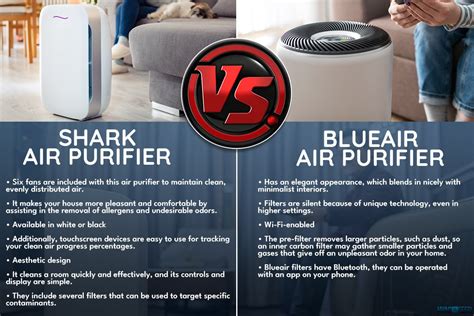Introduction
With the rising concerns over indoor air quality and the increased use of air purifiers in homes and businesses, the question of how to responsibly dispose of these devices becomes paramount. This article explores the different methods of air purifier recycling and disposal, highlighting their advantages and disadvantages. By delving into the environmental impact and regulatory frameworks, we aim to provide a comprehensive guide for responsible air purifier end-of-life management.

Air Purifier Recycling
The primary goal of air purifier recycling is to recover valuable materials, such as plastics, metals, and filters, and divert them from landfills. By reusing these materials, we not only conserve natural resources but also reduce the environmental burden associated with waste disposal.
Benefits of Recycling
- Resource Conservation: Recycling air purifiers prevents the depletion of non-renewable resources, such as plastics and metals.
- Reduced Landfill Waste: Diverting air purifiers from landfills helps alleviate the strain on waste management systems and reduces greenhouse gas emissions.
- Environmental Sustainability: Recycling contributes to the circular economy model, where waste is minimized and resources are reused to create new products.
How to Recycle Air Purifiers
- Check Local Regulations: Contact your local waste management authority to determine the specific recycling guidelines for air purifiers in your area.
- Find a Recycling Center: Locate a recycling center that accepts electronic waste, including air purifiers.
- Prepare the Air Purifier: Remove any filters or other detachable components that may require separate disposal.
- Transport the Air Purifier: Safely transport the air purifier to the recycling center and follow the instructions provided.
Air Purifier Disposal
While recycling is the preferred method of air purifier end-of-life management, there may be instances where disposal is necessary. This includes air purifiers that are irreparably damaged or have reached the end of their useful life.
Methods of Disposal
- Landfill Disposal: Air purifiers can be disposed of in landfills, but it is important to note the potential environmental impact.
- Incineration: Incineration involves burning air purifiers, which produces energy and reduces waste volume, but also releases pollutants into the atmosphere.
- Export to Developing Countries: Some countries export used air purifiers to developing countries, where they may be reused or disposed of improperly.
Environmental Impact of Disposal
- Greenhouse Gas Emissions: Landfilling and incineration of air purifiers contribute to greenhouse gas emissions, which contribute to climate change.
- Air Pollution: Incineration releases pollutants, such as dioxins and furans, into the atmosphere, posing risks to human health and the environment.
- Water Contamination: Landfilling of air purifiers can leach harmful chemicals into groundwater and surface water sources.
Regulatory Frameworks for Air Purifier End-of-Life Management
Governments around the world are implementing regulations to encourage responsible air purifier end-of-life management. These regulations vary by country and region, but generally focus on:
- Extended Producer Responsibility (EPR): Requiring manufacturers to take back and recycle or dispose of their products at the end of their useful life.
- Hazardous Waste Classification: Classifying certain air purifier components, such as filters containing activated carbon, as hazardous waste, requiring special disposal methods.
- Recycling Targets: Setting recycling targets for electronic waste, including air purifiers, to promote the diversion of these devices from landfills.
Considerations for Responsible Air Purifier End-of-Life Management
When considering air purifier end-of-life management, it is important to weigh the following factors:
- Environmental Impact: Opt for recycling whenever possible to minimize environmental impact.
- Regulatory Compliance: Follow local regulations and guidelines for air purifier disposal or recycling.
- Corporate Social Responsibility: Consider the environmental and ethical implications of air purifier disposal and align with company sustainability goals.
- Consumer Awareness: Educate consumers about responsible air purifier end-of-life management practices.
FAQs about Air Purifier Recycling and Disposal
-
What is the best way to dispose of an air purifier?
– Recycling is the preferred method, but disposal may be necessary for damaged or end-of-life air purifiers. -
What materials can be recycled from air purifiers?
– Plastics, metals, and filters are the primary recyclable materials in air purifiers. -
How do I find a recycling center for air purifiers?
– Contact your local waste management authority or search online for electronics recycling centers. -
What are the environmental impacts of air purifier disposal?
– Landfilling and incineration can contribute to greenhouse gas emissions, air pollution, and water contamination. -
Are there any regulations governing air purifier end-of-life management?
– Yes, many countries and regions have implemented regulations, including EPR and recycling targets. -
What should I do with old air purifier filters?
– Check local regulations for specific disposal guidelines. Some filters may require special disposal methods due to activated carbon content. -
How can I reduce the environmental impact of my air purifier?
– Choose energy-efficient models, replace filters regularly, and consider recycling or proper disposal at the end of its useful life. -
What are some innovative approaches to air purifier end-of-life management?
– Investigating the use of biodegradable materials in air purifier manufacturing and exploring partnerships with waste management companies for specialized recycling programs.
Conclusion
Air purifier recycling and disposal are critical considerations for ensuring a sustainable and environmentally responsible approach to indoor air quality management. By understanding the benefits and drawbacks of each method, we can make informed decisions that minimize environmental impact and promote the circular economy. Governments, manufacturers, and consumers have a shared responsibility to develop and implement robust air purifier end-of-life management systems, protecting our planet and safeguarding public health.





















